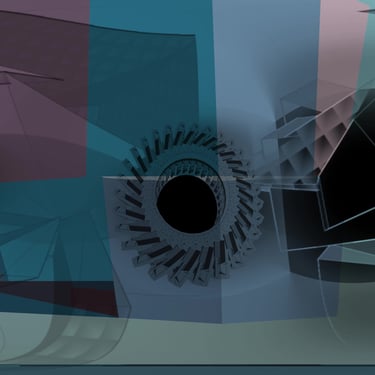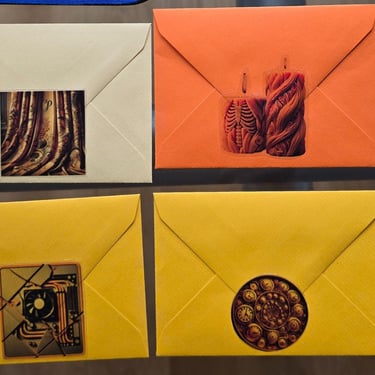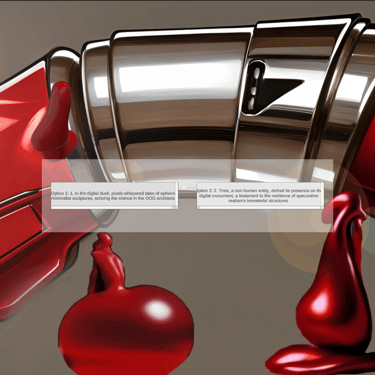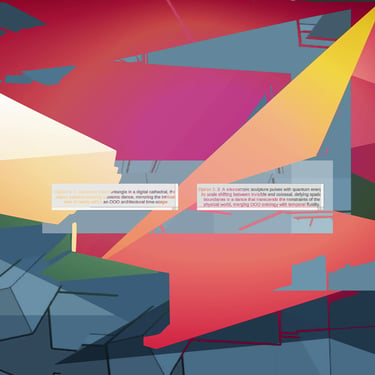The Philosophical Interface of the Present. A Curatorial Glimpse into the Digital as a Living Dimension.
Chiara Passa rewrites the coordinates of contemporary perception. A visionary, a pioneer of immersive art, and a poet of code, her work is not something you simply watch—it is something you inhabit, traverse, and are transformed by. From her concept of Super-Places to the groundbreaking quadrilogy From the Abstract Space, all the way to breathing interfaces, Passa leads us on a journey through living geometries, artificial intelligences, and spaces that watch us back. Discover why her universe will take center stage at Future Maastricht Museum & Gallery this September. A must-read for those who believe the future of art begins… now!
FEATURED ARTIST OF THE WEEK
Charlotte Madeleine Castelli
6/25/20254 min read
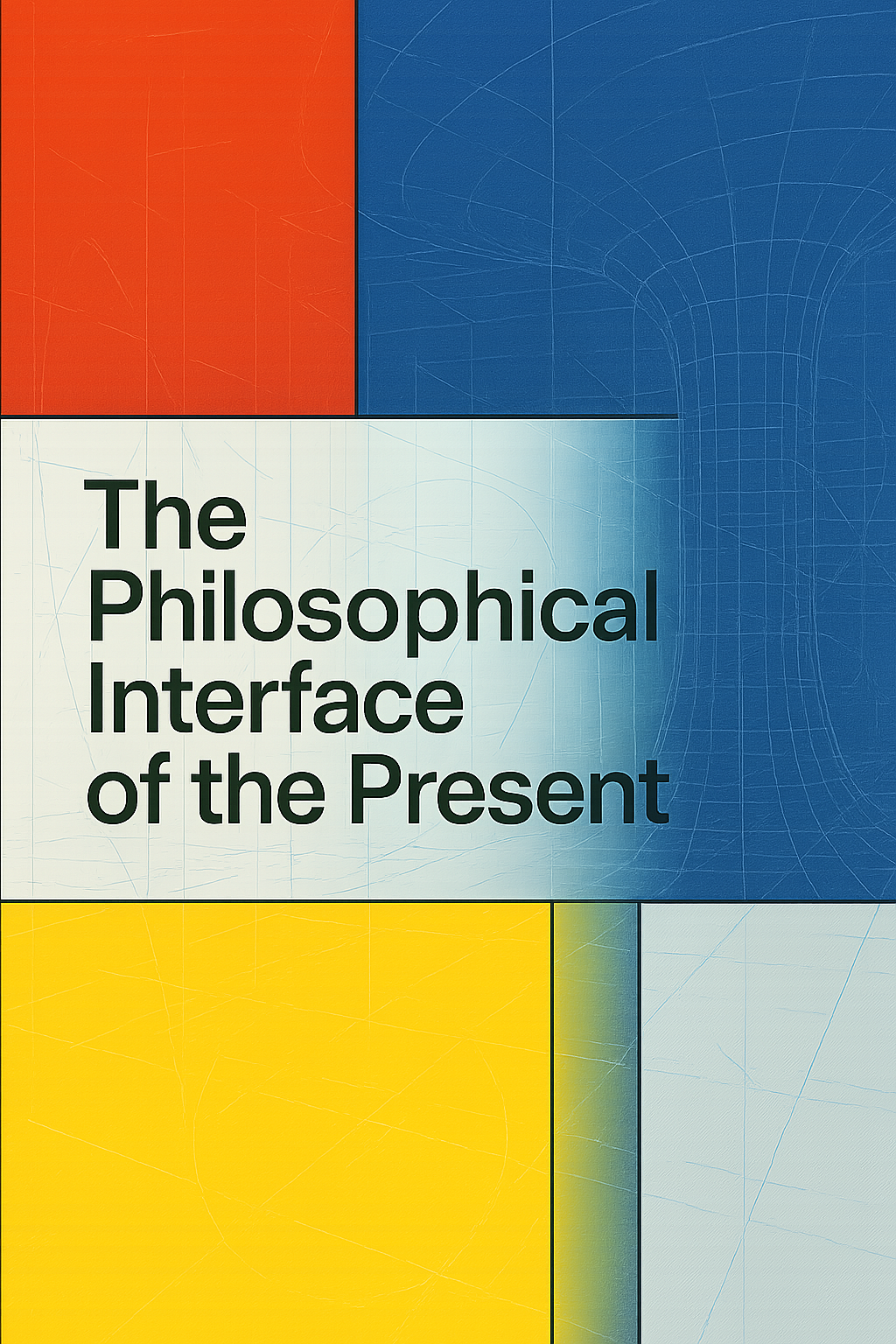

Where the boundaries between real and virtual dissolve and regenerate in a constant process of redefinition, the work of Chiara Passa stands as one of the most lucid, radical, and poetic testimonies of our contemporary world. Since 1997, her practice has unfolded as a fertile field of creative tension between art and code, matter and information, architectural and perceptual space. A tension that remains unresolved—intentionally so—where the interface, often considered a passive threshold, becomes instead an organism, a living philosophical object, a space of imagination and reflection.
The first time I experienced a work by Chiara Passa, I had the distinct sensation that space itself was watching me. It was deeply unsettling in the best sense of the word: reality was no longer what I was seeing, but something that was seeing me, inhabiting me, rewriting me. And this was no metaphorical flourish, but a precise and concrete interaction, born of decades of rigorous exploration into the artistic potential of technology.
Within our vision at Future Maastricht Museum & Gallery—an experimental institution that bridges museological structure with experiential research—I have the honor, alongside founder Riccardo Perillo, of working with Chiara Passa on her upcoming exhibition, set for September 2025. This collaboration fills us with energy—not only due to the stature of the artist herself, but because her body of work embodies an urgent cultural necessity. The exhibition will act as an interactive map of her research: a journey through the perceptual interstices of the post-digital age, orchestrating a dialogue between architecture, artificial intelligence, and subjectivity.
Chiara Passa is not an artist who merely uses augmented or virtual reality—she is an integral part of their poetic and conceptual evolution. Already in the late 1990s, she was experimenting with VRML environments and immersive installations at a time when the term metaverse had yet to enter cultural discourse. She employed the CAVE system and large-scale projections to fracture the flatness of the screen, to dismantle the frontal gaze, and transform space into an active, mutable, almost liquid field. A telling anecdote: although she began constructing virtual worlds in the early 2000s, it wasn’t until 2014 that she finally wore a 3D headset—stepping fully into the VR she had long theorized and helped shape, even before the tools caught up.
At the heart of her practice is space—but not space as a void to be filled. For Passa, space is an organism to be inhabited, disassembled, and animated. A living, ever-shifting environment, constantly expanding and contracting, generating ephemeral architectures and perceptual realities. She is, in every sense, a spatial artist. Her work traverses the topology of thought, mapping the mental form of space. With the concept of the Super-Place, coined in 1999, she proposes digital environments that are no longer passive containers but autonomous, performative entities—able to act and mutate in real time alongside the user. It is a reversal of classical architectural ontology: the house is no longer a "machine for living," but a consciousness that lives us.
Among her many award-winning experiments, the quadrilogy From the Abstract Space (2023–2025) emerges as a contemporary masterpiece of interactive narrative. The Yellow Film, The Blue Film, The Red Film, and The Black and White Film are not simply cinematic works—they are relational systems, interwoven with local AI models (such as Ollama), programming languages, sensor-driven responses, and immersive design. Vision splinters into possibility. The story writes itself as it is lived. These are not films to be watched, but to be inhabited.
In The Yellow Film, for example, viewers become directors through a series of envelopes containing clues. Each envelope, when placed on a table, is recognized by the system, triggering a transformation in the narrative. This is a cinema of subtle interactions and poetic choices, where storylines grow rhizomatically rather than linearly. Shadows cast by primitive geometric volumes shift with the direction of light, creating a psychic landscape in constant flux. The viewer enters a perceptual suspense that does not resolve—it regenerates.
The Blue Film and The Red Film operate as twin works, “entangled” like quantum particles: every choice made in one reverberates in the other. A single decision creates visual echoes, simultaneously shaping two parallel worlds. Interactivity becomes narrative entanglement, sculpting a plot based on uncertainty and randomness, and offering profound reflection on the ontology of space, identity, and the coexistence of systems.
The Black and White Film is no less compelling. It incorporates interactive objects and game-like structures, drawing the viewer into a cinematic dimension where the image becomes sculpture and the interface becomes body. The entire quadrilogy forms a visionary atlas of what might be called object-oriented cinema: a practice that transcends the limits of classical narrative to offer experiences that oscillate between installation, performance, sculpture, and digital game.
Yet Passa’s identity as an artist extends even further—into software, online platforms, and digital networks. Her Widget Art Gallery, designed for mobile and browser-based devices, is a portable micro-gallery that has hosted dozens of international artists, reflecting on what it means to exhibit art in the age of dematerialization. Here again, Passa doesn’t merely replicate the white cube on a screen—she reimagines it, making it interactive, alive, and multidimensional.
Equally revolutionary is her long-term project Ideasonair, born as a blog and evolved into a participatory conceptual artwork. For eight years, each month, she published a new idea—gifting it to the artistic community in the spirit of open-source creativity. Some ideas became works realized by other artists. Others vanished like seeds on the wind. Others still sparked vibrant debate. It is a project that questions authorship and intellectual property itself—offering an elegant precursor to today’s debates around shared creativity and collaborative art practices.
As a curator at Future Maastricht Museum & Gallery, working with Chiara Passa allows me to confront—with both courage and curiosity—some of the most urgent questions of our era: Where does the body end and data begin? What does it mean to inhabit a space generated by an algorithm? How might artificial intelligence be infused with aesthetic, rather than merely functional, purpose?
The upcoming exhibition in September will be a voyage without fixed coordinates—a shifting horizon where visitors are invited to explore, choose, get lost. These are not just works—they are immersive experiences in which every visitor becomes an active part of a poetic process. And perhaps this is Chiara Passa’s greatest lesson: that the future of art does not lie in technology itself, but in the human gaze that moves through it.
Because Chiara Passa does not merely create digital worlds.
She awakens them and invites us, without maps or fear, to dwell inside.
© Charlotte Madeleine Castelli | All rights reserved
